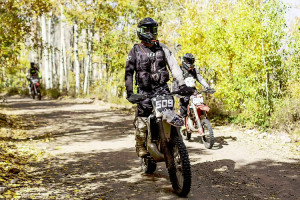Cryptobiotic means literally "hidden life". The desert floors of southeastern Utah, in particular many of the protected lands of the National Parks located on the Colorado Plateau, have a layer of cryptobiotic crust. This crust takes hundreds of years to develop. If you look closely, you will be able to see that they are actually minuscule forests of bacteria, green algae, lichens and mosses all lying over a dark layer of rich, organic soil.
Crusts hold the soil in place and protect underlying sediments from erosion. Crusts enable the land to recover more quickly after a fire. Cryptobiotic crusts are extremely fragile. They can be destroyed by crushing and trampling and once damaged, they may take years to come back. When not present, areas of soil are more subject to flooding and erosion. They are extremely susceptible to destruction by crushing and trampling.
Visitors to the areas in and around Moab, Utah need to be aware of the importance of Cryptobiotic crusts. Hikers and horseback riders who venture off established trails can damage crusts. Off-road vehicles are also destructive. Please tread lightly and be aware of the crusts when visiting and enjoying the high plateau areas of southern Utah.


